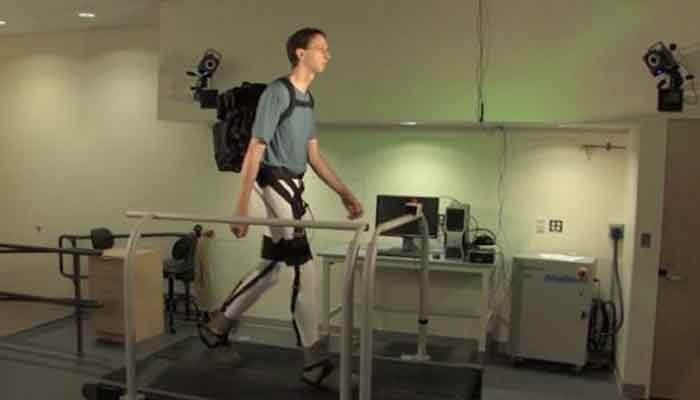New York: In a development that would benefit groups of people like soldiers, who frequently carry heavy things, researchers from Harvard University have developed a flexible exosuit that reduces the energy cost of walking when carrying a heavy load.
According to the researchers, the exosuit reduced the amount of energy consumed during loaded walking - the metabolic cost - by 7.3% on average.
The suit also significantly reduced the work done by the hip, knee and ankle joints, without impacting step frequency or length.
Video credit: Harvard University/YouTube
This suggests that the suit does not affect the wearers' freedom of movement but allows them to return to a walking profile closer to that of people walking without a load.
“Apart from assisting load carriers, we are exploring how the soft exosuit can be used to assist individuals with impaired movement, paving the way for the use of this technology in a wide range of people,” said Conor Walsh, the corresponding author.
The Harvard researchers used textiles to build their alternative to rigid exoskeletons which are heavier and can interfere with the natural movement of the joints, causing the wearer to change the way they walk.
The suit is composed of a waist belt, two thigh pieces and two calf straps, connected by cables to two motors mounted on a backpack.
The energy from the motors travels via the cables to the suit which transfers it to the wearer.
The suit becomes active only when it detects a walking motion.
It assists the hip and ankle joints which together contribute about 80 percent of the power produced by the leg joints during walking.
“Our results demonstrate for the first time that an autonomous soft exosuit can reduce the energy expenditure experienced by load carriers, possibly enhancing their overall gait performance,” Walsh added.
Seven experienced load carriers who had no injuries or diseases of their muscles, joints or bones, walked on a treadmill at a constant speed of 1.5 meters per second while carrying a load equal to 30 percent of their body mass.
Researchers monitored the participants' metabolism, kinetics (forces that influence the movements of the body) and kinematics (extension or rotation of joints and muscles).
They also analysed the participants' breathing, gait and muscle activation.
The device could also prove useful for people with physical impairments, the authors noted.
The study has been published in the Journal of NeuroEngineering and Rehabilitation.
(With IANS inputs)
















